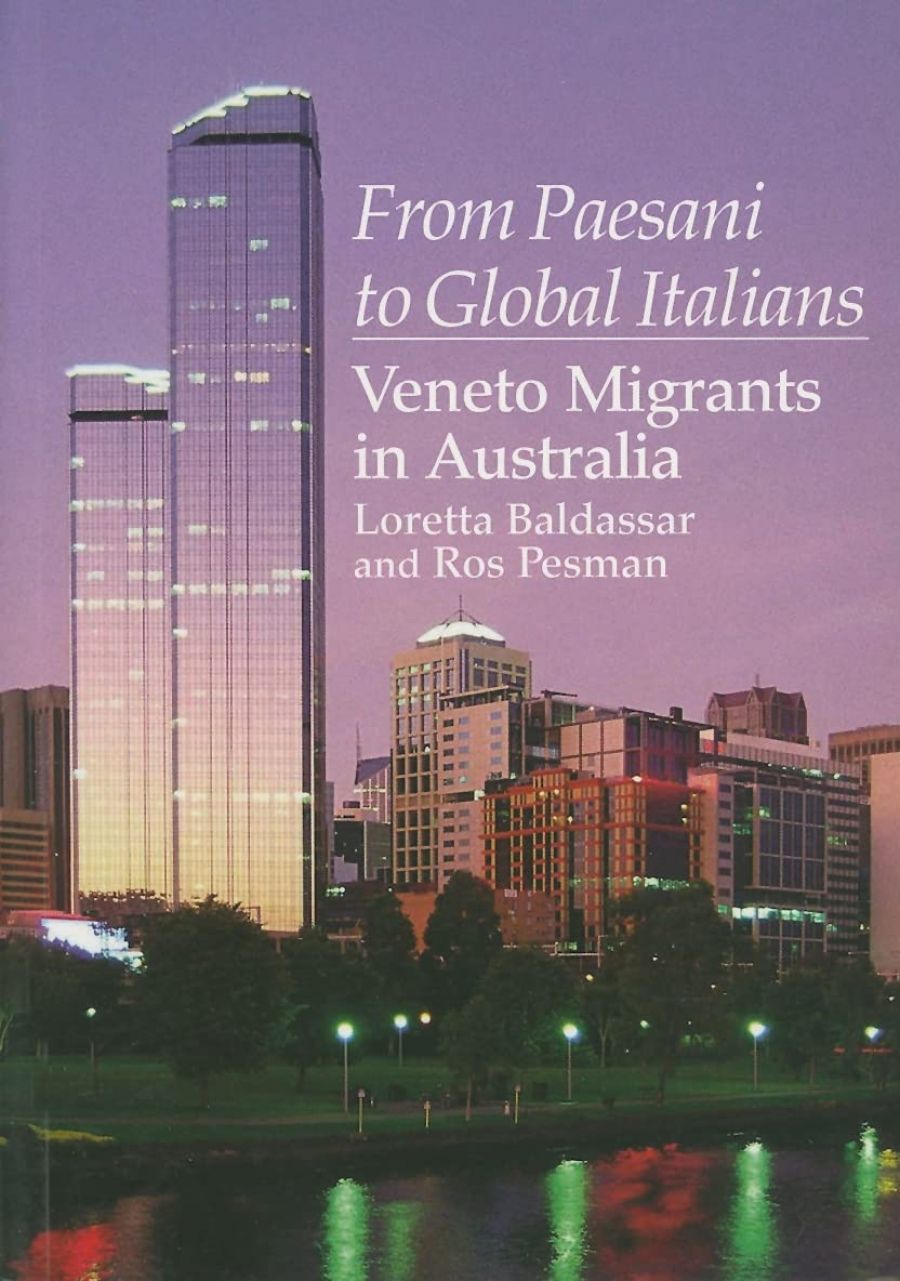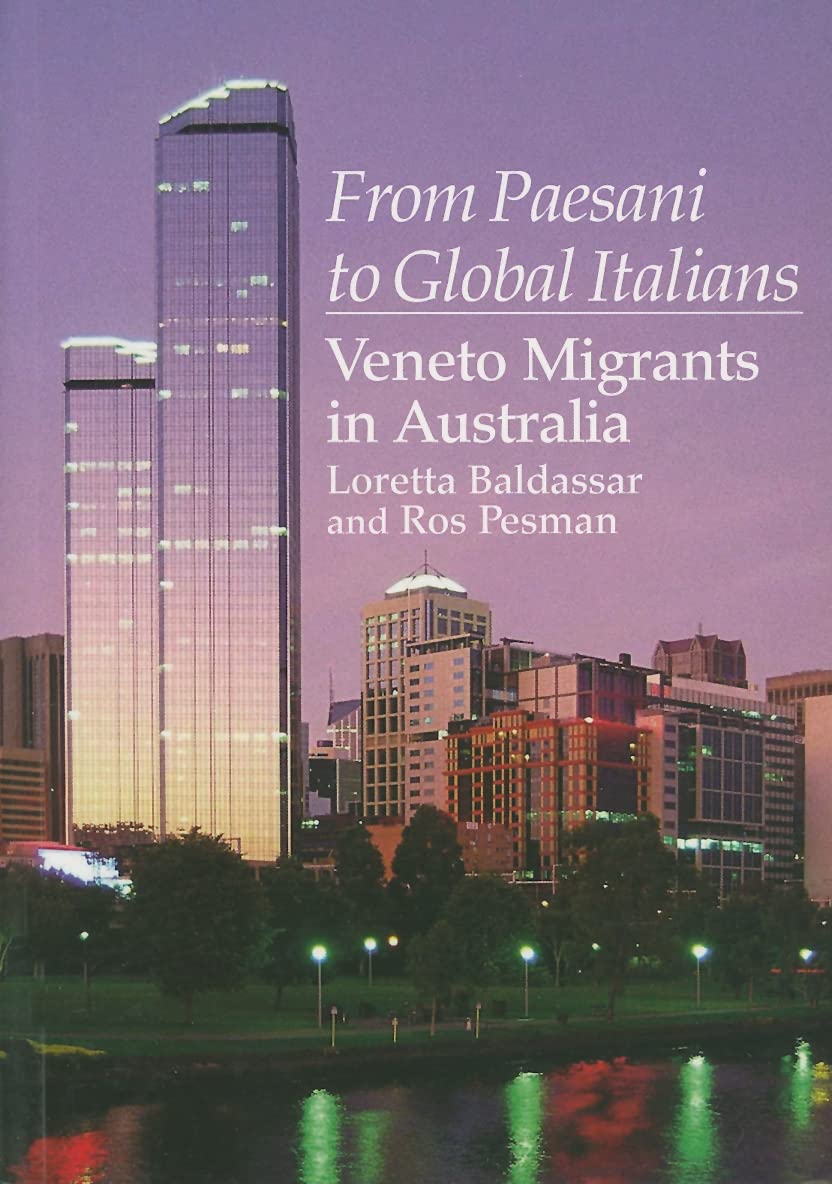
- Free Article: No
- Contents Category: Non-fiction
- Review Article: Yes
- Article Title: Transnational Veneti
- Online Only: No
- Custom Highlight Text:
The 120,000 expatriate Italians living in Australia, all of them newly entitled to vote in the recent election, contributed significantly to the knife-edge defeat of Prime Minister Silvio Berlusconi in April 2006. Before the counting of all such votes in the four electoral regions into which his own government had divided the world, Berlusconi looked to have a one-seat majority. Then the votes of emigrant Italians swung the outcome the other way. For the first time, their say elected six expatriate senators and twelve deputies, including one of each from the Australia/Asia/Africa region – both of whom happen to live in Melbourne.
- Book 1 Title: From Paesani to Global Italians
- Book 1 Subtitle: Veneto migrants in Australia
- Book 1 Biblio: UWA Press, $29.95 pb, 256 pp
- Book 1 Cover Small (400 x 600):

- Book 1 Cover (800 x 1200):

Considerable sociological attention has been directed to the general Italian presence in Australia, but this timely book concentrates, as its subtitle indicates, on migrants from the region I have elsewhere described as that ‘spectacular north-eastern province of Italy whose top is cordoned by the rearing Dolomites, whose feet are washed by the blue Adriatic’. The work of two academics, it was an initiative of the Veneto region in conjunction with the National Association of Emigrants and Ex-emigrants in Australia and America, and originally published in Italian. Focusing on the historical, economic, social and psychological issues of what it means to be a Veneto living in Australia, it necessarily takes the form of a survey, but one that is aware that such an approach means trying to capture something in a continuous process of transformation – just as ‘what it means to be Veneto in Italy is constantly changing’.
The contents are clearly demarcated in the chapter headings and sub-topics. The former discuss patterns of migration (whether circular or chain, before or after 1940); the occupations in which migrants most easily found work (largely referring to males, but not forgetting what women and children also did to augment the family income); their social and cultural life; the care of their elderly; considerations of the future of today’s children; the comings and goings of ‘transnational’ Veneti (those who don’t stay put in one country or the other); and a final glance towards the impact of globalisation on Australian-born Veneti.
All of it is useful documentation; some of it also lifts the covers on very human aspects of work and play (Chapters 3 and 4) through telling, even moving, first-person accounts of the way individuals adapted to the conditions of the new country. They left not because they found the prospect exciting but from dire necessity and the hope of employment, which they took on so doggedly that the word ‘slave’ crops up more than once in their memories. It is particularly striking, in the light of his later dominant role in the building industry, to read the heartfelt account of Luigi Grollo. Having left his home in the province of Treviso, he lived in a tent for much of the twelve years following his arrival, moving around Victoria and south-western New South Wales in search of a living. He turned his hand to almost everything, confessing later to the acute loneliness of his situation: ‘I had no friends, I had no brothers, no mother, no father, I was alone! … It was sad and hard ... I worked in the fields, with the rain and the wind, without eating … I lived hand to mouth, with no amusements … without under-standing what this life really was.’
Only a few of these first generation compatriots rose to comparable heights – Sir James Gobbo, who became governor of Victoria, is a notable example – but while most attained some degree of prosperity, a new set of concerns loomed above the heads of the second generation. Were they in danger of losing their italianità? To what extent could they be counted on to maintain Italian language and traditions? Although many still shuttle back and forth to the ‘home’ country, those thinking of repatriating often find even a short visit unexpectedly difficult. The disjunction comes out particularly strongly in an entertaining account of the difference in standards of dress between the two countries: Australia’s casual code led one ‘elder’ to accuse the children of ‘getting about like gypsies’. Few returnees, whether temporary or potentially permanent, are not touched by some degree of ambivalence, while at the same time their reactions are not immune to the effect of broader developments.
The growing sense of regionalism that is a noticeable trend throughout the enlarged European Union may reverse the tendency of the second generation to feel more ‘Italian’ than ‘Veneto’. However, the authors’ conclusion, that ‘The Veneto migration experience supports the view that immigration – forced or unforced – can generate worldwide networks that carry counter-currents to the homogenising processes often implied in globalisation’, can only be considered as one of the many goods to come out of the whole venture.


Comments powered by CComment